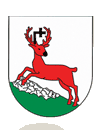Obtaining iron from iron ore is a complex physic-chemical process in which apart from iron also waste material in the form of furnace slags is produced. The pimaeval slags contained a high level of ferrous oxides (20-45%) as opposed to the contemporary large furnace slags. It proves that they were obtained in a different reduction process than the one used today where iron yield from ore is close to 100%.
Slags are very resistant to weather and soil conditions and therefore they could survive in an unchanged form for thousands of years. Since it is difficult to find traces of iron which because of its high value was carefully obtained and collected by ancient metallurgists, slags as waste material became the basic and frequently the only source for the research on the ancient metallurgy.
Cylinder blocks of slags weighing often over 100 kg found in great numbers on plough lands were stored by farmers for ages becoming with time an inseparable element of the countryside in the Świętokrzystkie Mountains. It is reflected in the common names given to the fields in this area. In the vicinity of Nowa Słupia there are some meaningful definitions as ‘Slags field’, ‘Slaggy’, and ‘The rough’.
Paradoxically slags making farming the lands difficult contributed to financial benefits of the local people. In the years 1926-1933 ironworks started mass purchase of ancient slags treating them as ore substitute owing to their rich iron content. The extent of the action was very wide – only one ironworks in Nowy Bytom was to process about 100 000 tons of this material.

Iron slags blocks on one of the farm fields in the area of Łysogóry. Photo by K. Bielenin
Removing furnace slags from farm fields and denudative process contributed to the destruction of a considerable number of slag-pit furnace sites registered during inventory works conducted by Kazimierz Bielenin. A second inventory of these sites started in the 80s of the 20th century within the programme ‘Archaeological Photograph of Poland’ and proved that the process can cause a complete removal of all evidence of ancient metallurgy from the places where it was clearly visible still in the 60s and 70s. Hence the information about the preserved blocks of slags or remnants of production workshops is very precious considering that only a small percentage of registered furnace clusters from the Świętokrzyskie region have undergone detailed archaeological research. Obviously it is impossible to cover all these locations accessible at the moment; however when finding relics of ancient production unit one should treat them as other archaeological relics and inform the Provincial Conservator of Monuments about the find. Apart from meeting a legal requirement we can thus contribute to the development in the research on the Świętokrzystki metallurgical district. The research has been carried out for the past 60 years; nevertheless it is difficult to evaluate the level of knowledge on the phenomenon as satisfactory.











